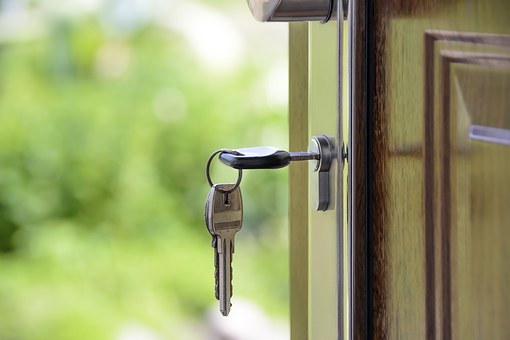Author: Igor Nastaskin
Finding a Home That Will Increase Your Quality of Life
Did you know that the location and size of your home can impact your quality of life? Your home is your personal retreat, and thus it should support your lifestyle and be compatible with your personality. Therefore, it’s an investment that can improve your quality of life. According to RISMedia, here are four steps you can take to find the home that’s not only best suited for you. Assess your situation Before you begin your house hunt, be sure to list all of the features that you desire. Include the logical aspects, such as proximity to your job and the quality of schools in the area if applicable. Then, list your desires. While you may not find a house that meets everything on your wish list, you should be able to find one that checks off the high-priority items. Consider your ideal location You can make changes to the interior and exterior of a house, but the location is something you can’t change. When evaluating how specific locales will complement your lifestyle, it’s usually a good idea to seek assistance from a real estate professional. These experts can guide you to areas that are compatible with your budget, as well as your immediate and future needs. Think about what you enjoy If you’re a social person, a condo in the city that offers amenities such as a pool, tennis court or exercise room might be a good option. If you don’t like city noise and nearby neighbors, you probably should concentrate your home search to rural settings. If you’re looking for a home to meet your downsizing goal, you may want to seek areas that support healthy aging, meaning they are conducive to outside walks, feature community social events and provide safety features within the home. Pay attention to size The larger the home, the more upkeep and cleaning time required. Typically, larger homes are more expensive to maintain. Buying a home that fits your budget comfortably will leave money in the budget for pleasurable activities that enhance your life.
NAR Survey Finds Gen X on the Mend
An improving economy, multiple years of strong job growth and a notable increase in home values in most markets fueled a greater share of purchases from Generation X households during the past year, according to a recently released study from the National Association of Realtors. The study—Home Buyer and Seller Generational Trends, which evaluates the generational differences of recent home buyers and sellers—also found that a growing number of millennials and younger boomer buyers have children living at home; student debt is common among Gen X and boomer households; more millennials are buying outside the city; and younger generations are more likely to use a real estate agent. Much of the spotlight in recent years has focused on challenges millennials are enduring on their journey to homeownership. According to NAR Chief Economist Lawrence Yung, lost in this discussion are the numerous Gen X households that bought their first home, started a family and entered the middle part of their careers only to be struck by job losses, falling home values, and overall economic uncertainty during and after the Great Recession. This 2017 study reveals that debt and little or no equity in their home slowed many Gen X households from buying sooner. Recent Gen X buyers delayed buying longer than millennials because of debt, were the most likely generation to have previously sold a distressed property and were the generation most likely to want to sell earlier but couldn’t because their home was worth less than their mortgage. In addition, Gen X buyers indicated they had the most student loan debt ($30,000). “Gen X sellers’ median tenure in their previous home was 10 years, which puts many of them selling a property they bought right around the time home values were on the precipice of declining,” says Yun. “Fortunately, the much stronger job market and 41 percent cumulative rise in home prices since 2011 have helped a growing number build enough equity to finally sell and trade up to a larger home. More Gen X sellers are expected this year and are definitely needed to ease the inventory shortages in much of the country.” The uptick in purchases from Gen X buyers this year (28 percent) was the highest since 2014 and up from 26 percent in 2016. Millennials were the largest group of recent buyers for the fourth consecutive year (34 percent), but their overall share was down slightly from a year ago (35 percent). Baby boomers were 30 percent of buyers, and the Silent Generation made up 8 percent. Here, some additional key findings from the study: Younger boomers were the most likely to purchase a multigenerational home (20 percent; 16 percent in 2016), and the top reason for doing so was that children ages 18 and older either moved back home or never left (30 percent; 27 percent in 2016). Debt, particularly from student loans, appears to be a portion of the household budget of buyers in every generation. While millennials were the most likely to have student debt (46 percent), their typical balance ($25,000) was lower than Gen X buyers ($30,000). A combined 16 percent of younger and older boomer buyers also had student debt, with a median balance of over $10,000 for each group. Among the share of buyers who said saving for a down payment was the most difficult task, millennials were most likely to cite student loans as the debt that delayed saving (55 percent), followed by Gen X (29 percent) and younger boomers (9 percent). Similar to previous years, roughly two-thirds of millennial buyers are married. One aspect of their household that has changed is the number of children in them. In this year’s survey, 49 percent of millennial buyers had at least one child, which is up from 45 percent last year and 43 percent two years ago. With more kids in tow, the need for more space at an affordable price is increasingly pushing millennial buyers outside the city. Only 15 percent of millennial buyers bought in an urban area, which is down from 17 percent last year and 21 percent two years ago. Regardless of age, buyers and sellers continue to see real estate agents as an integral part of a real estate transaction. In this year’s survey, nearly 90 percent of respondents said they worked with a real estate agent to buy or sell a home. This kept for-sale-by-owner transactions down at their lowest share ever (8 percent). Not surprisingly, online and digital technology usage during the home search has increased in recent years. Although millennials and Gen X buyers were the most likely to go online during their search, they were also the most likely to buy their home using a real estate agent (92 percent and 88 percent, respectively). On the seller side, millennials were the most likely to use an agent (90 percent), followed closely by Gen X and younger boomer sellers (each at 89 percent).
What Homeowners Want
Wondering if your property has everything needed to attract a buyer? According to Remodeling magazine, here are eight trends homeowners are seeking in today’s real estate market. Open floor plans The dominance of the open floor plan doesn’t seem to be fading. Homeowners are looking for connected spaces that allow visibility and interaction across living areas. This includes clean lines and large windows to let in natural light throughout the home. Ample storage One of the hottest trends isn’t just about aesthetics; homeowners also are seeking added functionality. This includes increased storage space, particularly in the kitchen. Especially popular are cabinets with doors that can be closed to hide electrical appliances and opened to create additional work space. Pops of color While white and gray still are popular colors, homeowners are beginning to venture outside of the neutral palette. For example, bright hues are being used for kitchen feature areas, such as islands and backsplashes. Additional Lighting Lighting fixtures are becoming more of a focal point. Many homeowners are investing in LED lighting, particularly in under-cabinet, recessed can and task lighting. Stylish tile Tiles present an opportunity for homeowners to go with a bold look, whether with the color, sheen or shape. Tile can be used to make a statement in the bathroom, with projects ranging from a pink-tiled powder room to the use of a rich cobalt blue in the master bath. Luxurious Flooring Homeowners are adding a bit of extravagance underfoot, with hardwood and high-quality tile emerging as the materials of choice. Many people are particularly interested in bigger plank width, large-format tile, and broader color and finish options. Graphic tile also is gaining popularity in baths and kitchens. Finishing touches Hardware and fixture finishes once were kept consistent to avoid any appearance of clashing. Now, however, homeowners are mixing metals more than they have in the past, and adding in warmer finish tones such as satin brass and rose gold. For appliances, trendy black stainless steel is garnering attention. Showers of praise Since many people don’t use their tubs frequently, more people are opting to remove them altogether and create a large, more luxurious shower with additional storage niches and beautiful tile.
The No. 1 Reason Not to Use Retirement Money to Buy a House
Saving for a down payment can be difficult, making it tempting to break into your 401(k). While you may trust yourself to pay it back, there are serious downsides to borrowing from a 401(k) that could really cost you down the road. Here, Trulia discusses the risks of borrowing from a 401(k) before retirement. You can’t afford the house If you need to borrow against your 401(k) to afford to buy a home, it’s likely that you probably can’t afford the house to begin with. Look and see where your money is really going and whether you can truly afford this. Is there money to be saved from your entertainment budget, for example? You should have other funds for a down payment because borrowing from a 401(k) can add a lot of financial stress. Even if you borrow from your 401(k) for a house, you’ll still need those savings Unlike an IRA withdrawal, you’ll have to pay back any money you take out of your company’s 401(k) plan. If you lose or leave your job, you could be required to pay back the outstanding balance within 60 to 90 days or be forced to claim it as a hardship withdrawal (which incurs a 10 percent penalty and taxes the withdrawal as income). If you were stretched enough financially to borrow from yourself in the first place, you likely won’t have the money down the line to cover what you owe in one big chunk. And there are many other costs associated with homeownership. If you can’t save the money for the down payment, it will be exponentially harder to save for the other associated costs, such as repairs and property taxes. Consider repairs and other expenses that may pop up after you buy before you get in over your head. A 401(k) loan can compromise your future wealth The typical 401(k) loan usually allows you to borrow up to 50 percent of your balance, up to a maximum of $50,000. If you take out the full $50,000, which was growing conservatively at 7 percent annually, in 20 years that money would have grown to a $193,000. Fast-forward to retirement, and you’ve taken a huge hit on your future finances. Not only that, but also the money you were using to pay yourself back all these years was the same money you should’ve been saving, making matters even worse for retirement. You could be penalized for and taxed on early distributions There are some situations the IRS considers OK when it comes to borrowing from your 401(k) plan before you hit 59.5 years old, but a home purchase isn’t one of them. When you borrow from your 401(k), you incur a 10 percent additional penalty on the early distribution, because the amount is now considered taxable income.In addition, since your contributions are made with pre-tax money, when you go to repay the loan, your payback will be made with after-tax dollars. Essentially, you’ll be double-taxed on that money. Borrowing from your 401(k) can start a pattern Once you’ve done something, it’s much easier to do it again. There’s no difference when it comes to taking out a loan. Fidelity, the home of millions of workers’ 401(k) funds, surveyed the behavioral patterns of repeat borrowers and found that those who borrowed from themselves were much more likely to do it again. Instead, opt for a thought-out, long-term plan—whether that means buying a less expensive house or reducing your retirement contributions slightly to increase your savings plan for a hefty down payment.








